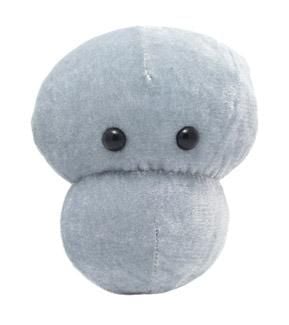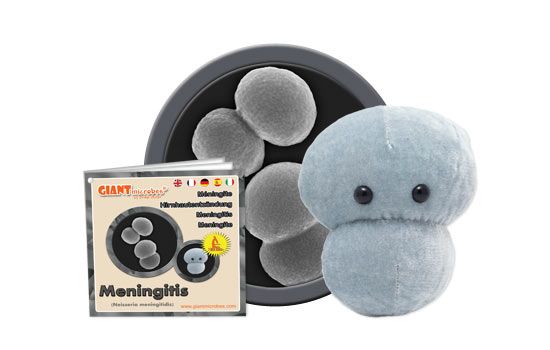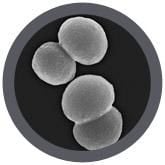Meningitis (Neisseria meningitidis)
Out of Stock
Product Details
Additional Information
| Sizes | Giantmicrobes are based on actual microbes, cells, organisms and other critters, only 1,000,000 times actual size! Gigantic (GG) 40-60cm XL (XL) 25-38cm Original (PD) 12-20cm Minis (MM) 5-10cm each Keychain (KC) 5-10cm with clip |
|---|---|
| Materials | Plush from all new materials. Stuffed with polyester fiber fill. Surface washable: sponge with water & soap, air dry. |
| Packaging | Each plush microbe includes a printed card with fun, educational and fascinating facts about the actual microbe or cell. |
| Safety | Every product meets or exceeds U.S. and European standards for safety. For ages 3 and up. |
All about Meningitis (Neisseria meningitidis)
FACTS: Meningitis is technically an inflammation of the meninges, or the membranes covering the brain and spinal cord. It can be extremely dangerous.
There are a number of viral and bacterial causes of meningitis, but Neisseria meningitidis is the most common cause of the more serious bacterial meningitis in children (who are most susceptible to the disease), and one of the most common in adults. It is quite contagious, and often spreads through groups of close quartered individuals such as children in daycare-settings, college students, and military personnel.
The signature symptoms of meningitis include a severe headache and stiff neck – which, in extreme cases, can cause sufferers to arch backwards – as well as fevers and chills, nausea, sensitivity to light and sound, and sometimes purple or red splotches on the skin.
Spinal taps can be used to confirm suspected cases of meningitis. However, because N. meningitidis infections are responsive to antibiotics, precautionary treatments are often prescribed before test results are confirmed. (Those who have been in close contact with suspected carriers are also at risk and can be treated as well.)
And it's important to do so. Untreated, meningitis can lead to brain damage, loss of hearing – and even death.
Fortunately, there are also now a variety of vaccines that can provide some protection against certain forms of meningitis. So use your head, and stay clear of this excruciating pain in the neck.
| Name | Itis= inflammation, and Meningitis is the inflammation of the meninges, the protective membranes of the brain and spinal cord. |
|---|
| Where It Lives | Meningitis can be caused by viruses, bacteria, and fungi. The bacterial meningitis is spread through direct contact with mucus and saliva, so people can get it from potent exposure to coughing, kissing, and sneezing. |
|---|
| Symptoms | Stiff neck, headache, nausea, loss of appetite, fever, sleepiness, light sensitivity, and confusion. As meningitis progresses, it can cause seizures, coma, or death. |
|---|
| Cure | Viral meningitis can resolve itself in a couple of weeks. Bacterial meningitis is considered an emergency, and antibiotics are used to treat it. There is a vaccine for the bacterial infection. |
|---|
| History |
1805: First recorded outbreak in Switzerland. Gaspard Vieusseux described meningococcal meningitis. 1887: Anton Weichselbaum discovered meningococcus, also known as Neisseria meningitidis, the bacterium that causes meningitis. Big Outbreaks: 2012: 64 fatalities and 700 infected by fungal meningitis in Massachusetts from contaminated drugs. Recent Outbreaks: June 2015: Chicago outbreak of meningitis among gay and bisexual men. So far, 6 have been diagnosed and 1 has died. |
|---|
| Fascinating Facts |
• Half of meningitis cases occur in small children. • Bacterial meningitis can be fatal within hours. • About 10% of people who get meningitis die. • Victoria Beckham and Brad Pitt were infected with viral meningitis, which is less serious than the bacterial meningitis. |
|---|






